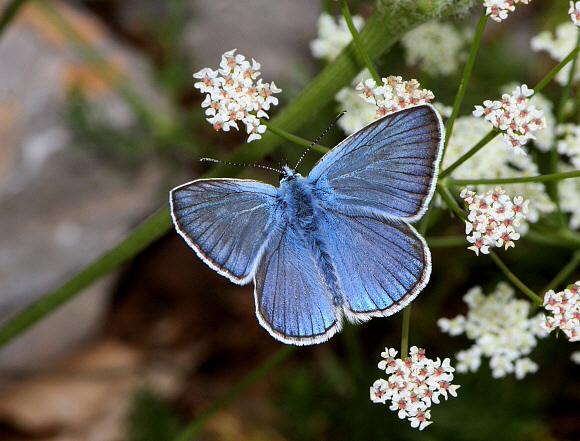 Polyommatus amandus, male, Trnovac, Gospič, Croatia – Peter Bruce-Jones
Polyommatus amandus, male, Trnovac, Gospič, Croatia – Peter Bruce-Jones
Introduction
The taxonomy of the genus Polyommatus has recently been revised so that it now includes those species formerly placed in Lysandra, Neolysandra, Sublysandra, Plebicula, Elviria, Rimisia, Bryna, Meleageria, Agrodiaetus, Paragrodiaetus and Cyaniris. Defined thus Polyommatus comprises about 220 species, distributed variously across Europe, North Africa, temperate Asia and North America.
Polyommatus amandus is found across Europe and temperate Asia but is absent from Britain and from arctic regions. In North Africa it is found in the Atlas mountains of Morocco and the Djurdjura mountains of Algeria.

Polyommatus amandus, male, Trnovac, Gospič, Croatia – Peter Bruce-Jones
Habitats
This species inhabits warm sheltered damp grassy areas of hillside including woodland glades, sub-alpine hay meadows and alpine pastures, at elevations between about 100-2000m.
 Polyommatus amandus, female, Ba�ke O�tarije, Croatia – Peter Bruce-Jones
Polyommatus amandus, female, Ba�ke O�tarije, Croatia – Peter Bruce-Jones
Lifecycle
The larval foodplants are various Vicia species ( Fabaceae ). The larvae are attended by ants of the genera Formica, Lasius, Myrmica and Tapinoma.
Adult behaviour
Males commonly aggregate with other Polyommatinae to imbibe mineralised moisture fro the edges of puddles and small streams. Both sexes visit a wide range of flowers for nectar. The butterflies roost overnight on grass heads.
